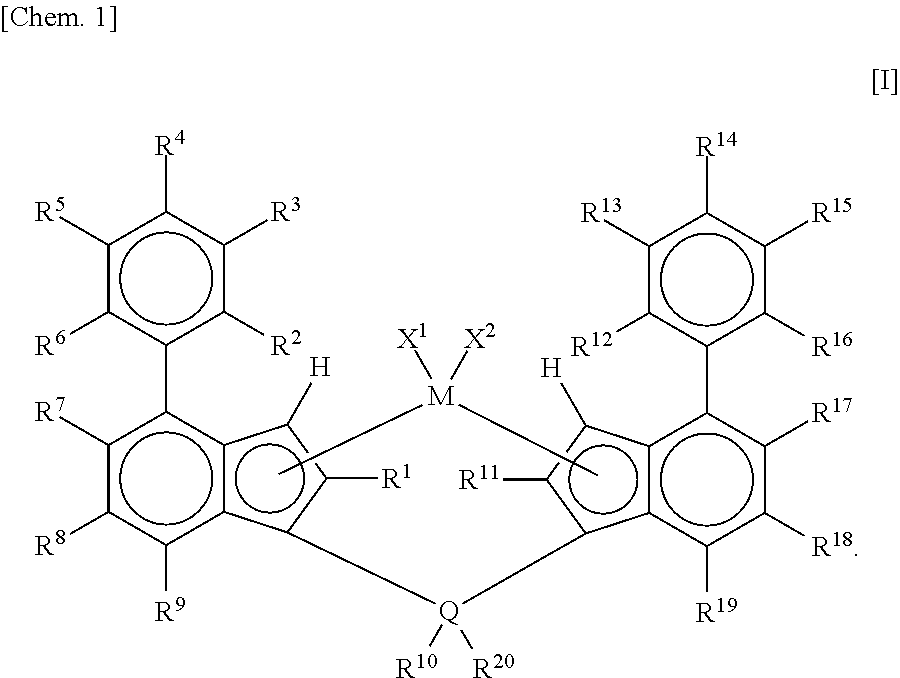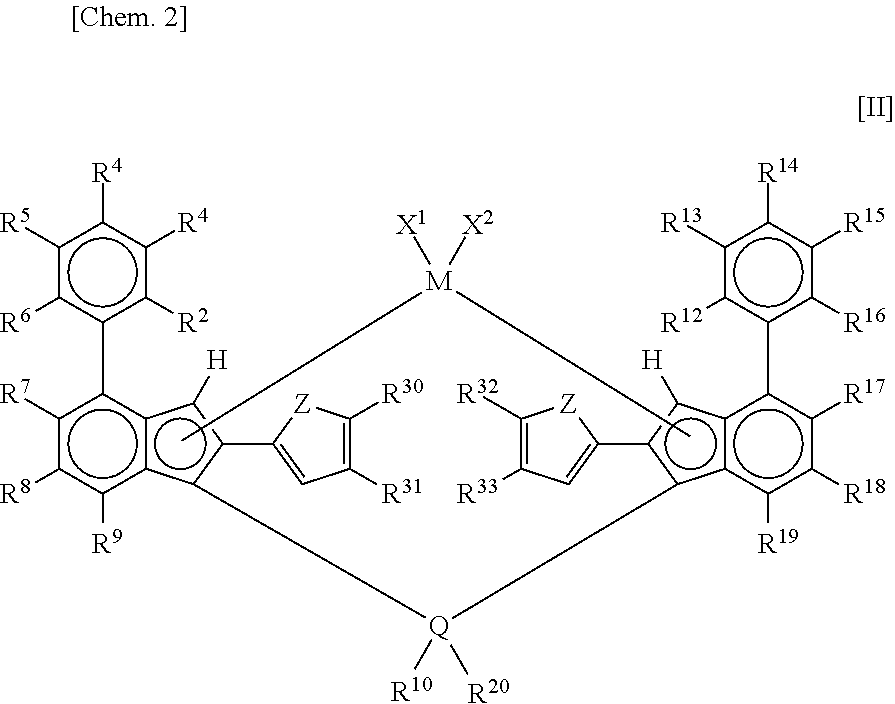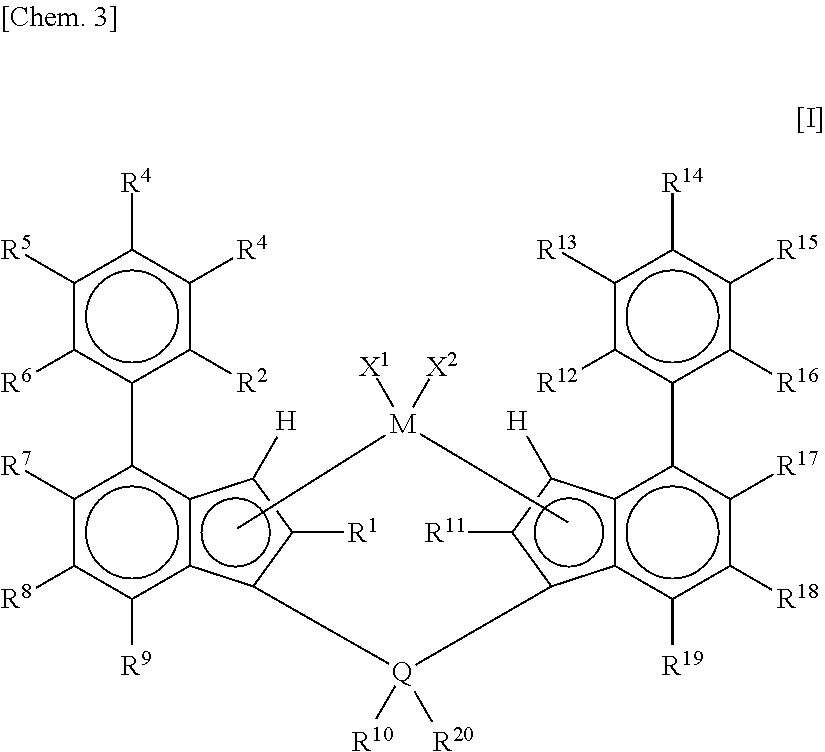Metallocene complex and olefin polymerization method
a technology of olefin and complexes, applied in the direction of group 3/13 element organic compounds, physical/chemical process catalysts, organic chemistry, etc., can solve the problems of insufficient impact resistance of polymers, detrimental effects on smell and taste, and impact copolymers prepared in the presence of traditional ziegler-natta catalysts inevitably contain low-molecular weight components, etc., to achieve a higher uptake rate of ethylene, facilitate the manufacture of homopolyprop
- Summary
- Abstract
- Description
- Claims
- Application Information
AI Technical Summary
Benefits of technology
Problems solved by technology
Method used
Image
Examples
example 1
Synthesis of Metallocene Complex A: Synthesis of Dimethylsilylene-Bis[2-(5-Methyl-2-Furyl)-4-Phenyl-5,6-Dimethylindenyl]Zirconium Dichloride (Metallocene Complex A)
(1-1) Synthesis of 5,6-Dimethylindanone
[0254]A mixture of 48 mL (0.4 mol) of o-xylene and 50 g of 3-chloropropionyl chloride was added dropwise to a suspension of 116 g (0.87 mol) of aluminum chloride in 200 mL of nitromethane on an ice bath. After the solution was warmed to room temperature and was stirred for 5 hours, the solution was poured into 1 N hydrochloric acid-ice water, and the mixture was stirred. The organic layer was separated, was washed with 1 N hydrochloric acid, water, and then saturated brine, and was dried over magnesium sulfate. The solvent was distilled off under reduced pressure while the precipitated solid content was collected as needed during the distillation. The solid content was gradually added to 300 mL of sulfuric acid. The mixture was heated in an oil bath at 100° C. with stirring for 4 hou...
example 2
Synthesis of Metallocene Complex B: Synthesis of Dimethylsilylene-Bis[2-(5-Methyl-2-Furyl)-4-(4-t-Butylphenyl)-5,6-Dimethylindenyl]Zirconium Dichloride (Metallocene Complex B)
(2-1) Synthesis of 4-(4-t-Butylphenyl)-5,6-Dimethylindene
[0274]To a 500 mL three-necked flask were added 4-bromo-5,6-dimethylindene (3.4 g, 15 mmol), 4-t-butylphenylboronic acid (3.25 g, 18.2 mmol), tripotassium phosphate n-hydrate (7.7 g, 31 mmol), palladium acetate (0.11 g, 0.5 mmol), biphenyldicyclohexylphosphine (0.33 g, 0.94 mmol), and toluene (287 mL), and the mixture was heated under reflux in an oil bath for 2 hours. The solution was subjected to solvent separation and distillation to yield unpurified 4-(4-t-butylphenyl)-5,6-dimethylindene (4.6 g).
(2-2) Synthesis of 2-Bromo-4-(4-t-Butylphenyl)-5,6-Dimethylindene
[0275]Into a 500 mL recovery flask were placed the unpurified 4-(4-t-butylphenyl)-5,6-dimethylindene (4.6 g, 17 mmol), dimethyl sulfoxide (41 mL), and water (1.5 mL). N-Bromosuccinimide (5.04 g, ...
PUM
| Property | Measurement | Unit |
|---|---|---|
| Fraction | aaaaa | aaaaa |
| Fraction | aaaaa | aaaaa |
| Fraction | aaaaa | aaaaa |
Abstract
Description
Claims
Application Information
 Login to View More
Login to View More - R&D
- Intellectual Property
- Life Sciences
- Materials
- Tech Scout
- Unparalleled Data Quality
- Higher Quality Content
- 60% Fewer Hallucinations
Browse by: Latest US Patents, China's latest patents, Technical Efficacy Thesaurus, Application Domain, Technology Topic, Popular Technical Reports.
© 2025 PatSnap. All rights reserved.Legal|Privacy policy|Modern Slavery Act Transparency Statement|Sitemap|About US| Contact US: help@patsnap.com



